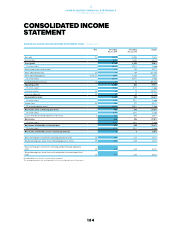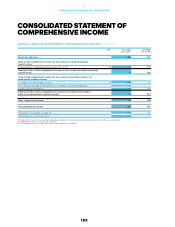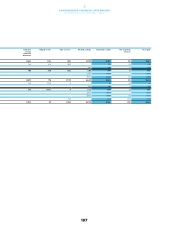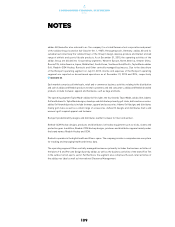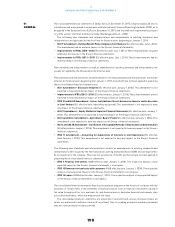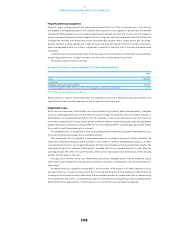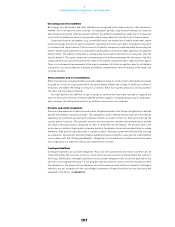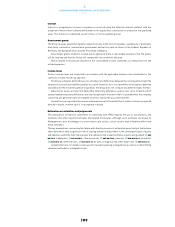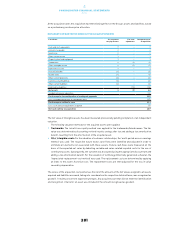Reebok 2015 Annual Report Download - page 198
Download and view the complete annual report
Please find page 198 of the 2015 Reebok annual report below. You can navigate through the pages in the report by either clicking on the pages listed below, or by using the keyword search tool below to find specific information within the annual report.CONSOLIDATED FINANCIAL STATEMENTS
Notes
194
4
Hedges of net investments in foreign entities are accounted for in a similar way to cash flow hedges. If
the hedging instrument is a derivative (e.g. a forward exchange contract) or a foreign currency borrowing,
effective currency gains and losses in the derivative and all gains and losses arising on the translation of
the borrowing, respectively, are recognised in equity.
The Group documents the relationship between hedging instruments and hedge objects at transaction
inception, as well as the risk management objectives and strategies for undertaking various hedge
transactions. This process includes linking all derivatives designated as hedges to specific firm commitments
and forecasted transactions. The Group also documents its assessment of whether the derivatives that are
used in hedging transactions are highly effective by using different methods of effectiveness testing, such
as the ‘dollar offset method’ or the ‘hypothetical derivative method’.
The fair values of currency options, forward exchange contracts and commodity futures are determined
on the basis of market conditions on the reporting dates. The fair value of a currency option is determined
using generally accepted models to calculate option prices. The fair value of an option is influenced not
only by the remaining term of the option but also by additional factors, such as the actual foreign exchange
rate and the volatility of the underlying foreign currency base. Fair values are determined taking into
consideration the counterparty risk. The adidas Group has exercised the option to calculate the amounts
on counterparty level according to IFRS 13 ‘Fair Value Measurement’, paragraph 48.
Cash and cash equivalents
Cash and cash equivalents represent cash at banks, cash on hand and short-term deposits with maturities
of three months or less from the date of acquisition.
Cash equivalents are short-term, highly liquid investments that are readily convertible to known amounts
of cash and which are subject to an insignificant risk of changes in value.
Receivables and other financial assets
Receivables and other financial assets are recognised at fair value, which corresponds to the nominal value
for current receivables and other financial assets. For non-current receivables and other financial assets,
the fair value is estimated as the present value of future cash flows discounted at the market rate of interest
at the balance sheet date. Subsequently, these are measured at amortised cost using the ‘effective interest
method’. Required allowances, if necessary, are determined on the basis of individual risk assessments,
and on the ageing structure of receivables past due.
Inventories
Merchandise and finished goods are valued at the lower of cost or net realisable value, which is the estimated
selling price in the ordinary course of business less the estimated costs of completion and the estimated
costs necessary to make the sale. Costs are determined using a standard valuation method: the ‘average
cost method’. Costs of finished goods include cost of raw materials, direct labour and the components of
the manufacturing overheads which can reasonably be attributed. The allocation of overheads is based on
the planned average utilisation. The net realisable value allowances are computed consistently throughout
the Group based on the age and expected future sales of the items on hand.
Assets/liabilities and disposal groups classified as held for sale
Assets/liabilities and disposal groups classified as held for sale are primarily non-current assets and
liabilities expected to be recovered principally through sale rather than through continuing use. These are
measured at the lower of their carrying amount and fair value less costs to sell. Assets classified as held
for sale are not depreciated on a straight-line basis.


